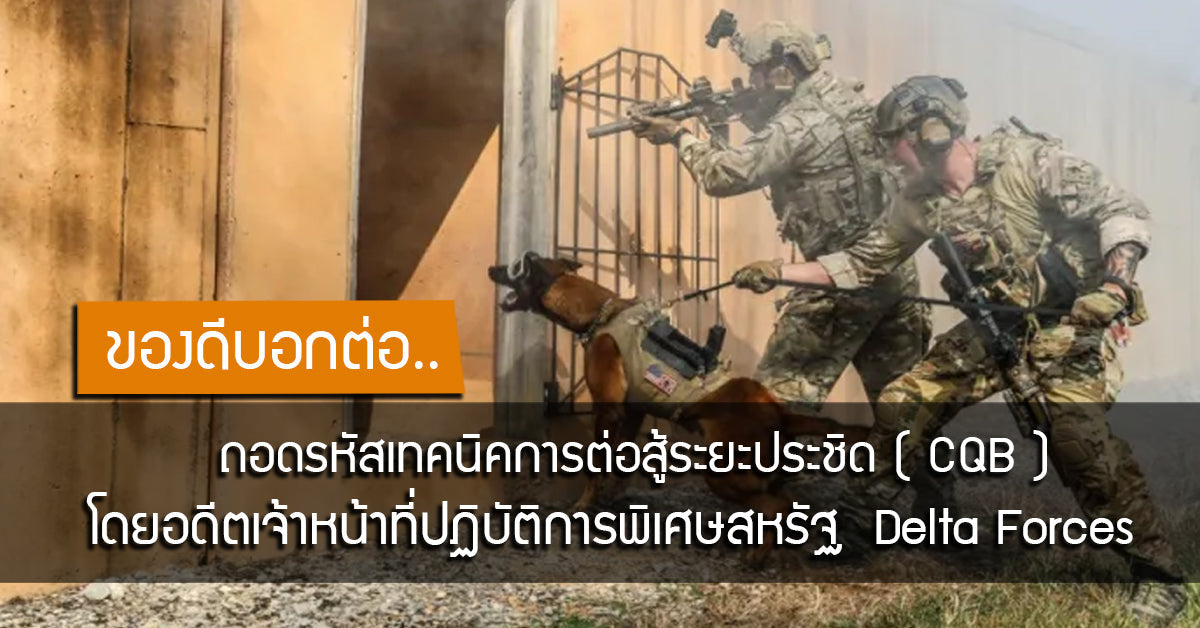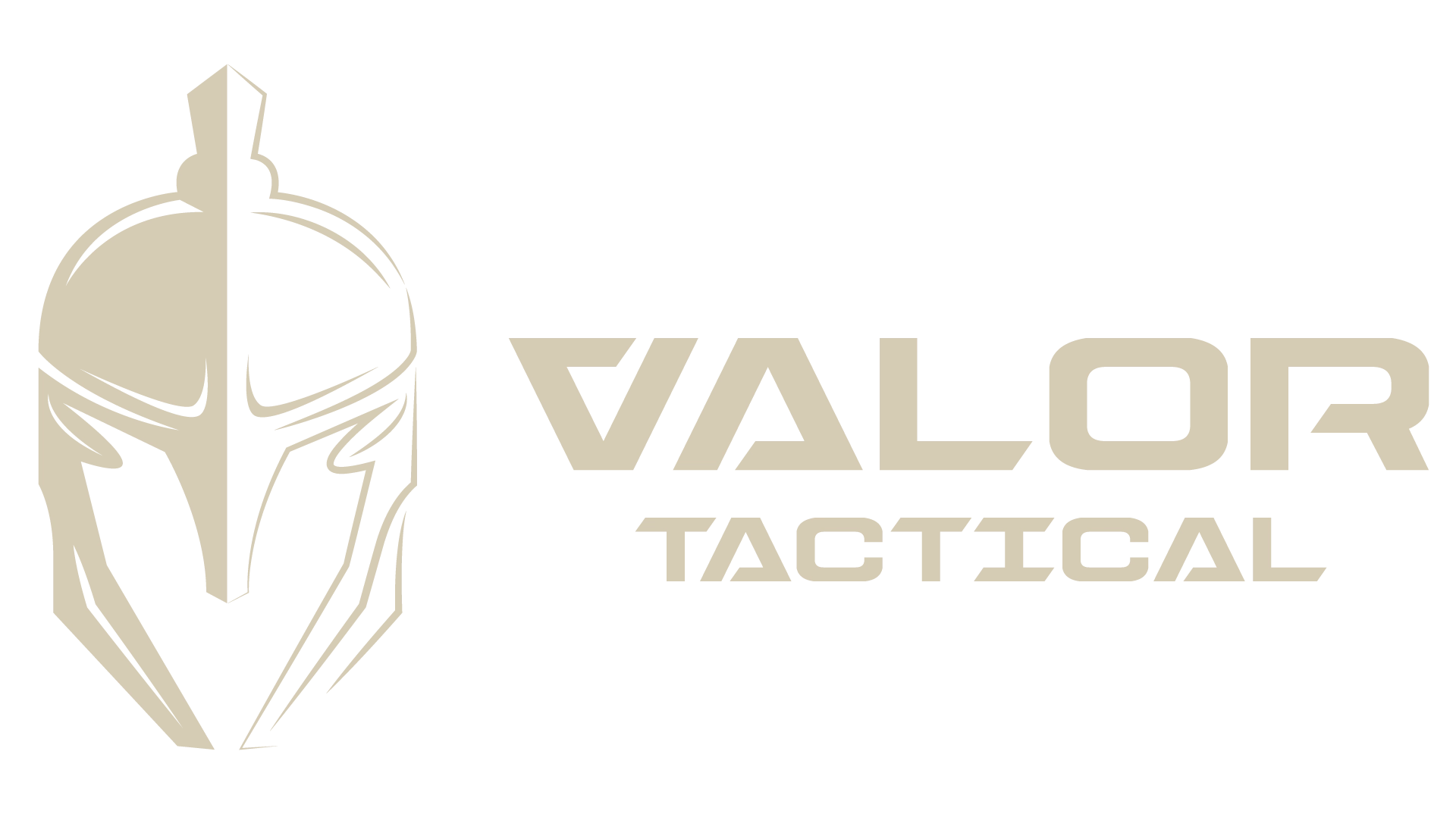Whether you know the name of close-quarters combat
In the name called Close Quarters Battle ( CQB )
Or Close Quarters Combat (CQC)
In the beliefs of the world's leading special operations officers
They jokingly say that CQB/CQC usually consists of:
The practitioner's guts or courage is 75% and only 25% technique.
In fact, close-range combat is considered another difficult art.
and one of the most mentally challenging in the history of combat.
It is considered to be the property of all mankind because it requires self-control.
And fighting against the fear in one's own mind is very important in facing the incident. 
*The above images are for illustrative purposes only.
If you just look at the video clip and see anything that "looks like"
It will be a CQB training pose and it feels easy and cool.
It doesn't look like it would take long to practice, let me tell you, that's because
You don't know the world of CQB well enough yet...
Why is it said that CQB consists of the guts or courage of the practitioner?
Up to 75%, I would say simply ... if you can find someone who
Can carry an AR-15 and immediately storm into a room.
Without any prior information in mind, such as location or local situation.
The number of villains, their weapons and abilities, and their courage.
To break in even though you know that there are people inside the room holding real guns and real bullets.
That is really ready to kill you if you have that group of people in your hands.
That means you have a workforce with 75% understanding.
The art of close-range combat is complete. 
*The above images are for illustrative purposes only.
After that, gradually develop the necessary techniques another 25%, such as techniques
Movement, use of cover and other things you need to know more about
It sounds easy, right? But in real life, it's not even close to that.
If you want to develop a group of people who are ready and have expertise,
In the art of real close combat, one person or a team
It takes more than just fighting techniques to create these people.
These people are not the only ones who will speak up when these events happen:
"I'll try to go in." But they are the ones who "I'm ready to go in."
And ready to do it again and again, no matter how many times or how many years have passed ...
The author of this article had the opportunity to talk to one of the Delta team leaders.
Where he lost both his senior teammates and the new kid on the team at the same time.
In the same incident, they were killed by the same shooter in the same room on the Iraq battlefield. 
Those people are former MSG team leader Rebert Horrigan and Msg Michael L McNulty.
They were shot in the head by the terrorists' random shooting behind cover.
What a sad story for that senior teammate.
Because at that time it should be the last room in the last building to be cleared.
Of the final combat mission for the final overseas operation.
In his official life, which should be his farewell mission.
It was not the last event that led to the sacrifice of life from that incident.
Even experts can make mistakes, and that's what makes
Close-quarters combat, such as CQB/CQC, is one of those seemingly simple disciplines.
But it is one of the most difficult training methods in combat. 
And today we will share the principles of close-range combat.
Which was directly transmitted from a former Delta Forces officer.
His name is GEORGE E. HAND IV, and he said that the principles that he will speak about next
It wasn't his idea alone, but it was knowledge that was exchanged with blood.
and the real life missions of comrades-in-arms from every battlefield in the world ..
What exactly is CQB/CQC? Is there a set formula?
What I'm about to tell you next is not a rule. It's not an order that must be followed.
It is just a principle and a guideline that should be applied and the rest.
It depends on experience, training, and tens of thousands of practice questions.
That we must make mistakes, learn from them and fix them so that we will never have the word mistake again.
When we actually carry out our mission 
*The above images are for illustrative purposes only.
One thing to know is that CQB is not self-defense, it is not a defensive technique.
It is a fighting technique, which is to charge into danger, not to defend yourself from it.
Before the term CQB existed, there was a simple term for it called Raids.
And in the art of attack, there are three very important things.
That is ... Surprise , Speed , Violence of action 
*The above images are for illustrative purposes only.
Surprise : is a sudden and unprepared attack.
It is about creating an advantage while the enemy is not prepared.
To understand the weapon known as Surprise, one must understand that:
It is the result of silence, of good concealment.
and techniques for making the best use of silence, which is silence in the workplace
This is the result of reducing the factors caused by noise and light while moving.
As little as possible before launching an attack on a target.
Speed : It is the speed of the work when we create a surprise.
The next important thing is to do whatever it takes to not give the enemy time to prepare.
Put them in a helpless position and turn on our side.
To control the situation and create continuous pressure until the mission is completed.
That's why when an operation is ordered, everything has to be fast.
It is decisive and must be continued until the end, even if there are mistakes.
Or if the loss occurs at that moment, the most important thing is to finish it.
Finish the battle and then talk about helping.
or collecting evidence at the scene
Violence of Action : is the severity and decisiveness of the operation.
That means that at that moment, there should be no hesitation in your mind.
If it's time to enter...you must enter. If it's time to exchange...you must exchange.
What makes you hesitate or unsure, or poses a danger to your teammates?
You have to get rid of them, no matter how inhumane they are.
It is a factor that will cause your enemy to lose completely to you.
Reduce your chances of being targeted, reduce your risk of being targeted
Or if your teammates fail, that's what will happen.
Along with speed and creating surprise in the attack 
*The above images are for illustrative purposes only.
In addition to the 3 basic principles of Raid or later eras
We'll call it CQB, but there's one more thing that the authorities
Emphasize the importance of paying attention at all times in every mission.
That's what's called Maintain 360 Degree Security, or to put it bluntly,
It is about maintaining a safe line at every angle of movement.
Because in real practice, you don't know what will happen next.
And I don't know if there'll be anything else behind? The room you said was safe.
What was safe 10 seconds ago might not be safe 10 seconds from now.
What you need to focus on is your unfinished path ahead.
And the paths you have passed as well ...
Clearing a room in a building if you are moving at company or battalion level
You might clear one area at a time and leave some troops to guard that area.
And you can continue to the next area, but not with the special operations team.
That idea doesn't work if you only have 7 people in a 4-story building.
With more than 20 rooms inside ..
You have to change your mindset that the second you enter a room,
The room is yours, and the second you leave the room,
That means the room is no longer yours either. 
*The above images are for illustrative purposes only.
Everyone must believe that in order to maintain a state of vigilance in all directions.
The slightest carelessness can lead to a failed mission, so move
Everything must be harmonious and united because at that moment
There are only 7 or 10 lives around you that you can trust with your life.
That changed my perspective on CQB training.
Because training is not about training one person's tactics.
But it's team training, teamwork, team communication.
And the body language of each team, that's the heart of CQB training. 
*The above images are for illustrative purposes only.
That is, everyone must know each other's hearts and know their own duties every second.
Of work ... you have to know what your friends are doing.
You have to know what the team is doing and what you need to do to fill the void.
of the team at that time. That makes it so there are no fixed rules for each person.
How to stand, how to act, it is about observing and supporting each other.
If your friend looks to the left and you see that the right side is clear, you have to go and help your friend.
If you see that the left and right are safe, but there is no one watching behind you, you must be the one watching.
There are no rules about who must do what. It is the understanding of a group of people.
What steps and periods should he do automatically?
Without having to order or having to supervise as little as possible
And the most important thing is "mindfulness" because it is something that everyone must have all the time.
In that second, it's normal to be afraid.. But if you're afraid and you're still losing your mind,
That means you are a danger to yourself and your teammates... 
*The above images are for illustrative purposes only.
And how is Delta Forces training different from other units?
The answer is not difficult at all… because we always train by sticking to reality.
Anyway .. and this is an example of a rare case that we encounter in our training life ..
Event 1: Back to the time when the author was still working.
At that time, I had the opportunity to train with the Korean Special Operations Unit.
who stopped by our training center in the base during CQB training.
We set up paper targets for live-fire practice.
Placed in various positions within the shooting house.
Shortly after, their team leader
He brought all his subordinates into the room and showed them each room.
To show where the target is, which they did well, they noticed.
And try to draw a shooting pose to simulate where he would have to shoot the gun.
It's like his brain has already programmed him to do something.
I tried to ask the Korean team leader.
As to why they did that, we got the answer from the team leader:
"Because according to the procedure, we do not allow it.
Allow the operational team to practice inside the building with live ammunition.
If the target is not checked before training, "
"Okay.... Then you guys will never understand.
What is the difficulty of CQB? 
*The above images are for illustrative purposes only.
It was with that curiosity that I did in the last moment, that was to secretly take it.
There are about 2-3 targets placed in the corners of the room.
And we were up there observing as they started their live-fire training.
Everything turned out as I feared and it really turned out as I thought.
When it came to actual operations, I saw members of the Korean Special Operations Unit.
Repeatedly shoot into empty walls with no targets.
At every point where I secretly took out the target
They were shocked by what happened, but for some reason they refused to talk about it.
In the after action review (AAR), and I don't know if they learned this.
Because shortly after, they changed their training plan and returned early.
All we could do was smile and tease each other in the group, saying:
"I hope they can learn something. Welcome to the world of CQB." 
*The above images are for illustrative purposes only.
Incident 2: At Ft. Bragg, we were doing a building clearance exercise.
During the night… we start by breaching the room, clearing it one by one.
Building by building, quickly until we reach the final room… when we break in.
What we saw between the two targets in the room was a man... kneeling.
And with both hands raised in a surrender position, the man was an officer from Sayeret Matkal.
Israeli military special operations unit inside the building
While we are practicing shooting with live bullets!
Of course we didn't shoot him... Everything ended smoothly even though we didn't know that.
How did this guy get into the Shooting House and what is he doing there?
From the inquiry, we learned that the officer wanted to learn that
The feeling inside the building as Delta Force cleared it
What would happen ... His face was shocked and he tried to tell us again and again.
When we did the AAR, how did we do it? We cleared the room quickly.
While still confirming the position and selecting the target correctly immediately
How can there be no losses or any kind of friendly fire (Blue on Blue)?
We answered him in a cool way that ...
"For us, it's very easy... because we are trained not to shoot people.
The ones that are not dangerous inside the building, we only shoot the bad guys...
It's one of those simple CQB practices that we've done thousands of times." 
*The above images are for illustrative purposes only.
The simple answer doesn't come easy... because it comes with bullets.
Thousands of matches per week, thousands of training hours combined
And many years of practical experience, with only top-tier operators.
To have the opportunity to practice enough to be able to do that thing and to be able to live that person's life.
It's just one of the things we've been trained to deal with....
It's just that this time, a real person came into the training without our knowing, that's all...
But believe it or not, this is not the first time we've encountered something like this..
Because all the time the Delta team was training, sometimes
We often get surprises like this from General William Garrison.
It's the same thing every day...one of his hobbies that we don't really like.
It's because he often sneaks into the Shooting House while we're practicing.
Cleared the building with live ammunition several times. 
While he sits quietly on the table in the room, holding a toothpick in his mouth.
And he has a cigar in his hand, even if we break in, he will do his job well.
To play the role of a detainee before we storm into the next room.
He chose to put himself in the spotlight for target discrimination training.
During the conflict ( target discrimination. / Target Identification)
Even though it sounds crazy, I admit that it happened because he trusted us with his life.
He chose to do it without knowing that one day we might accidentally shoot him.
And of course, that person's professional life would probably be extinguished in the blink of an eye as well.
But that incident never happened, and that made the general
Dare to answer questions when someone asks why you chose Delta team.
In carrying out many important missions
Our answer and the general's answer remain the same.
"Because no one can clear a room as well as Delta!"
Source : Nobody goes into a room like Delta Force: A CQB attitude primer
Article Author: GEORGE E. HAND IV (Former SFOD-D)
Article translator / editor: Ronnakrit " Viking " Sripumma
On March 11, 2022


